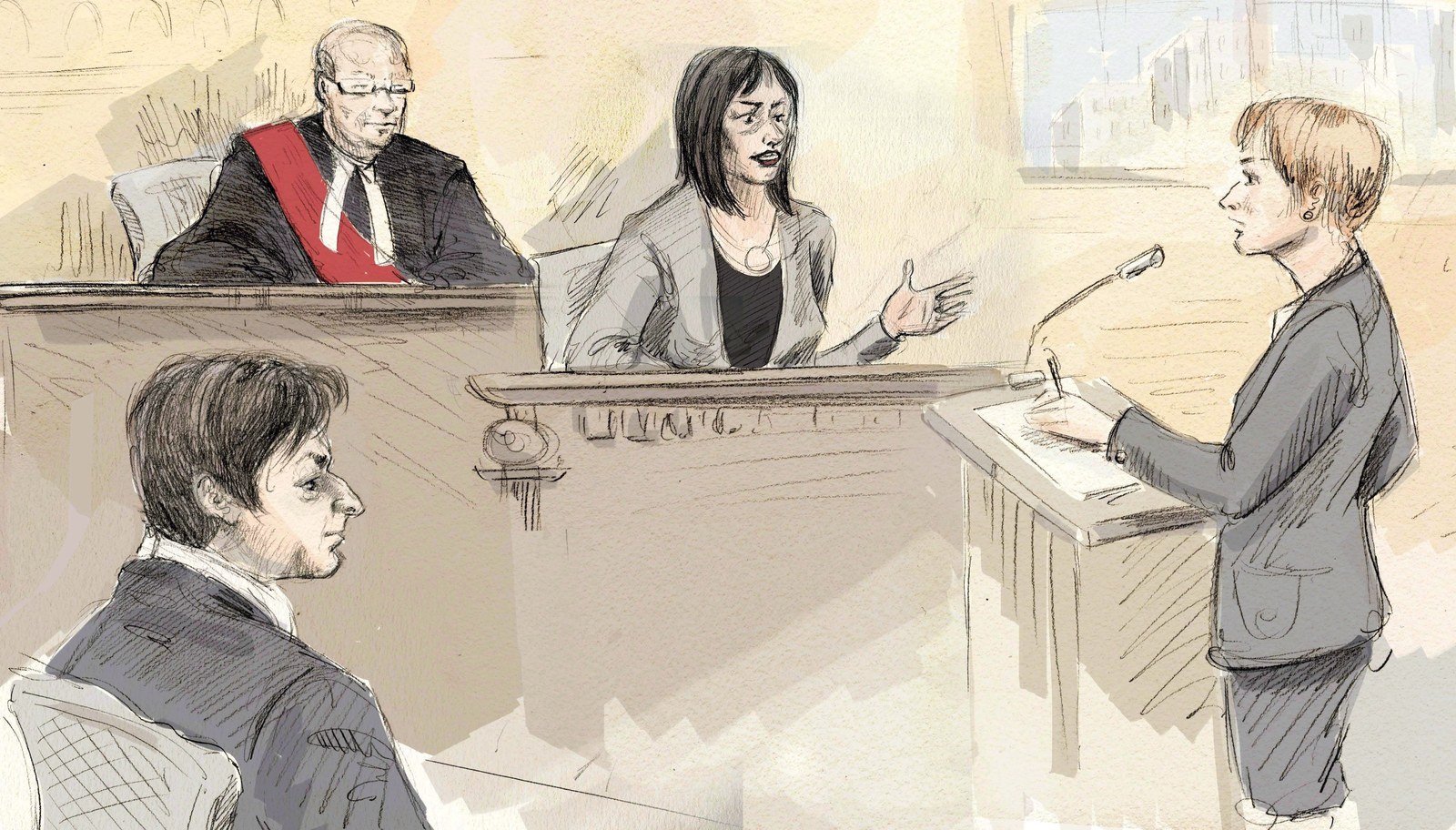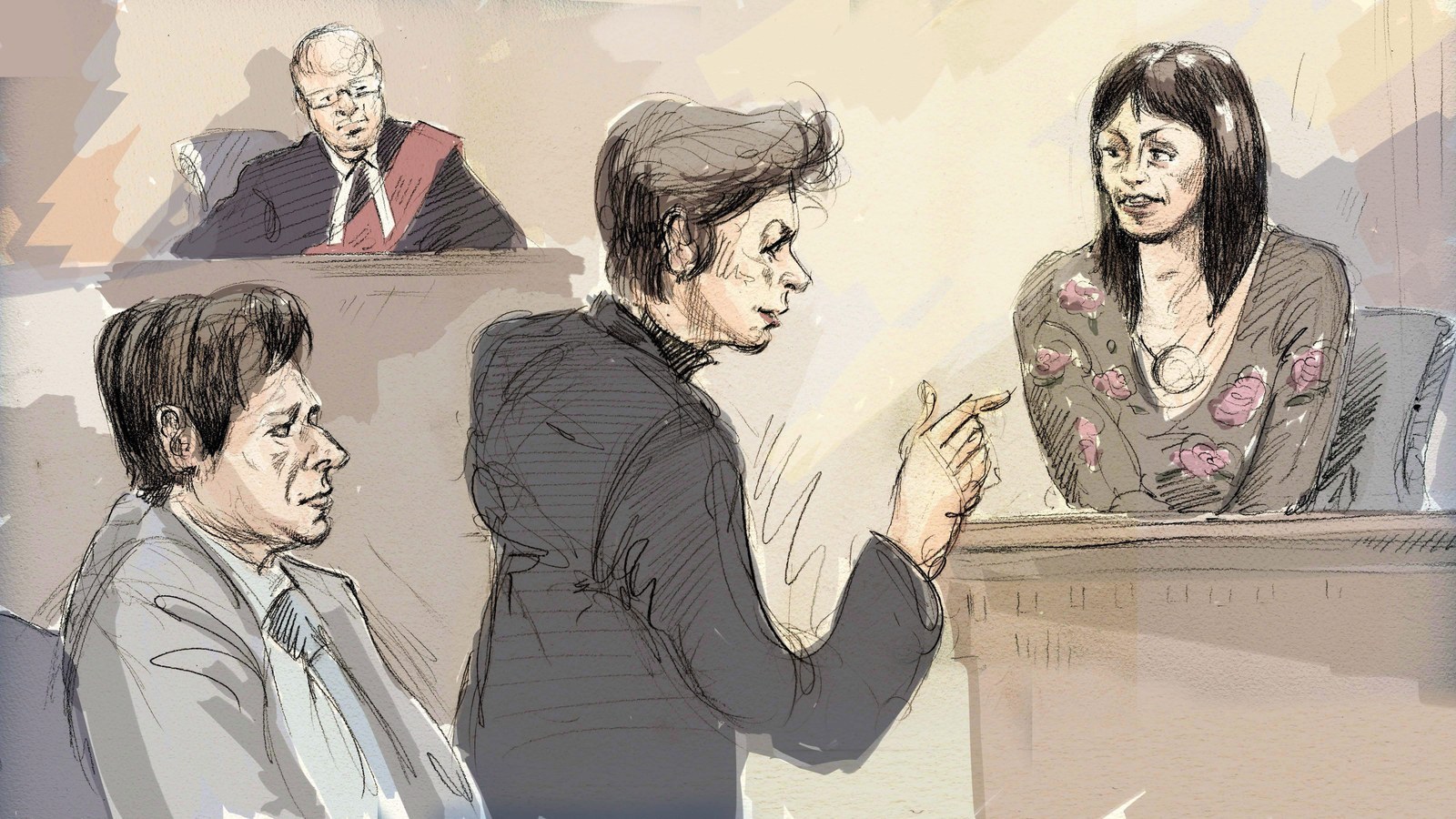The judge overseeing the Jian Ghomeshi trial once threw out a similar — and even stronger — case after lawyers used some of the same tactics employed by Ghomeshi's defence team.
Like the Ghomeshi trial, the 2008 case involved a man accused of multiple sexual assaults.
Like the Ghomeshi trial, defence lawyers attacked the complainants for inconsistent statements and accused them of collusion.
And like the Ghomeshi trial, there were courtroom revelations that a complainant had hidden embarrassing information.
But unlike the Ghomeshi trial, prosecutors had a rape kit that revealed DNA samples, toxicological evidence showing one victim may have been drugged, and corroborating eye-witness accounts.

The Crown also had the benefit of the accused man giving a story so implausible that the judge dismissed it as a “schoolboy’s fantasy.”
But in the end Justice William B. Horkins acquitted the man because of defence tactics extremely similar to what Ghomeshi’s lawyers employed over the past two weeks.
The trial involved a man, identified only as AM, who hosted his younger sister and his sister’s two friends, Pam and Cynthia (both names are pseudonyms), for an evening at his house in 2006.
At the end of the night both AM’s sister and his girlfriend went upstairs to sleep. He stayed downstairs with the two friends. Cynthia had been drinking heavily and was asleep on the floor. Pam was on the couch.
Pam testified she woke up to discover AM raping her and kissing her breasts. She said at first she could not move her limbs or even open her eyes. She said she gradually regained dexterity but stayed still out of fear.
She said after the assault, AM walked over to Cynthia and started kissing her and removing her belt, before finally leaving the room. She described wanting to cry out but being unable to.

A screaming fight ensued, with Pam telling everyone in the house that AM had raped her. Cynthia also reported waking up to AM kissing her.
The police were called. Pam underwent a rape kit examination that revealed AM’s DNA on her breasts and vagina.
They also found the sedative Ativan in her system. She denies ever knowingly taking it and of the people in the home, only AM was known to have had a supply of the drug.
AM was charged with sexually assaulting both Pam and Cynthia. His story was that while he was sitting on the couch, Pam threw herself at him by massaging him and showing him her breasts.
"I am clearly unable to embrace the evidence of the accused as the truth…That, of course, is not the end of the matter."
He admitted to kissing her breasts, then said she “attempted to mount” him. He said she stuck her fingers into his mouth, then put them down to her vagina — thus how his DNA ended up there.
AM said he told Pam he couldn’t do this and to "get the fuck off me." He then fled the room — pausing to lean over Cynthia just long enough to make sure she was able to breath properly. The defence argued Pam made up the rape story out of anger at being rejected.
Judge Horkins didn’t buy it.
He said the story was “somewhat incredible. It reads like a schoolboy's fantasy and seems to conveniently contain just sufficient admissions…. to answer the undeniable forensic evidence of sexual contact.”
Lacking a credible witness of their own, the defence team set to attacking the credibility of the complainants.
They accused the women of collusion, arguing they had time to align their stories while they waited outside for police to arrive.
They pointed to inconsistencies. In Pam’s version of events, she stormed into AM’s room first to tell his girlfriend. But in the version of AM and his sister (who was seen as a reliable witness torn between her brother and her friends), Pam went into the sister’s room.
Pam said she had no recollection of Cynthia being drunk to the point of vomiting, while others did. Pam says she didn’t recall a discussion about sex toy parties early in the evening, while others did. She said she did not recall telling the group about a past incident of sexual abuse, while others said her story made quite an impression on them.
It also came out during cross-examination that Pam had once been charged with fraud. She initially denied it on the stand.

Most importantly, Horkins had “major concern” about her credibility because she did not move during the alleged rape or immediately after. The judge found that the amount of drugs and alcohol in her system would not have incapacitated her as she described.
In short, it was the realization of precisely what many sexual assault survivors fear about coming forward. Embarrassments from her past, her actions in a moment of distress, and problems with her memory combined to undo just enough of her credibility to form reasonable doubt.
Cynthia’s case was simpler. Horkins found that her level of intoxication meant her memory could not be trusted.
AM was acquitted of all charges.
Though AM’s case varies in many ways from the Ghomeshi trial, and should not be used to assume the outcome of the latter, there are also many similarities.
Ghomeshi’s lawyers have cross-referenced media interviews and police statements to show inconsistencies. They implied two witnesses colluded through thousands of emails and text messages to each other.
Most famously, they introduced affectionate emails and letters to Ghomeshi not previously disclosed. In this area, Horkins expressed sympathy. In his 2008 ruling he accepted that a witness may hide embarrassing information but still be credible.
“From human experience, we know people are sometimes reluctant to be completely forthright for a variety of reasons. Panic or embarrass-ment are two obvious examples…”
“Panic or embarrassment are two obvious examples of what may motivate otherwise honest individuals to put a gloss on certain events,” he wrote in the AM decision.
“I consider it understandable that both consciously and unconsciously some essentially honest witnesses may edit or ‘spin’ their recollection of past events in the hope of being believed on the central truth of their evidence.”
However, Horkins said that when combined with other issues, such as a lack of candor, these omissions can contribute to reasonable doubt.
In the case of Cynthia, she admitted there were gaps in her memory due to drinking, but insisted she remembered AM kissing her. Horkins found her a sincere witness, but discounted her evidence as unreliable because it could have come from talking to Pam.
"(Cynthia) had
the opportunity to discuss the allegations with her friend," he wrote. "There is room to suspect that she may have unconsciously filled in some of the blank gaps in her memory with information conveyed by her
friend."
Ultimately, Horkins decided that finding an accuser to be more credible than the accused is not enough to reach the threshold of guilt beyond reasonable doubt.
“It is very often impossible to confidently declare that the truth has clearly been discovered and the allegations resolved one way or the other,” he wrote in 2008.
“I am afraid that I am left in a state of great uncertainty as to where the truth lies in this case and this is a classic form of reasonable doubt.”
